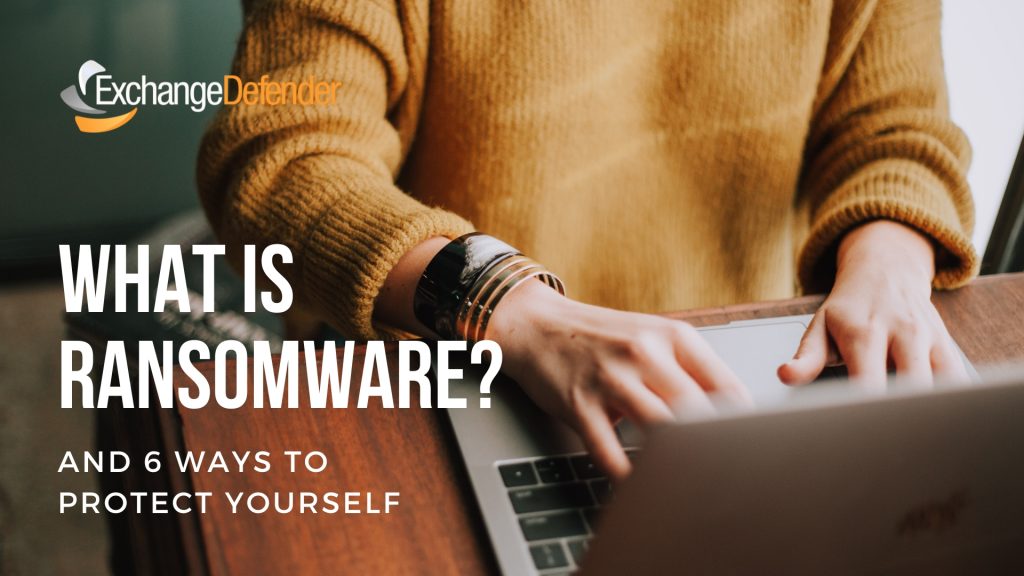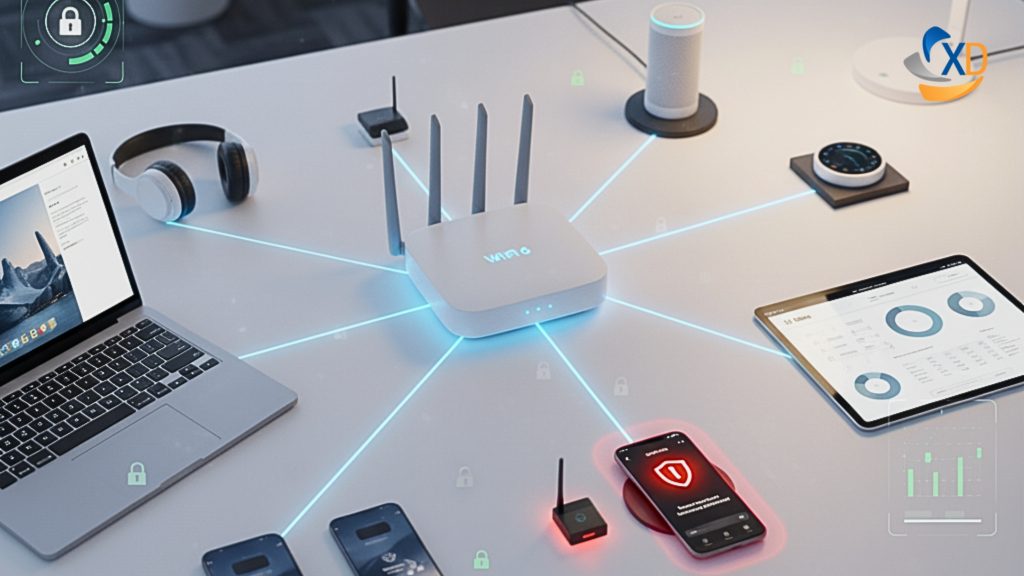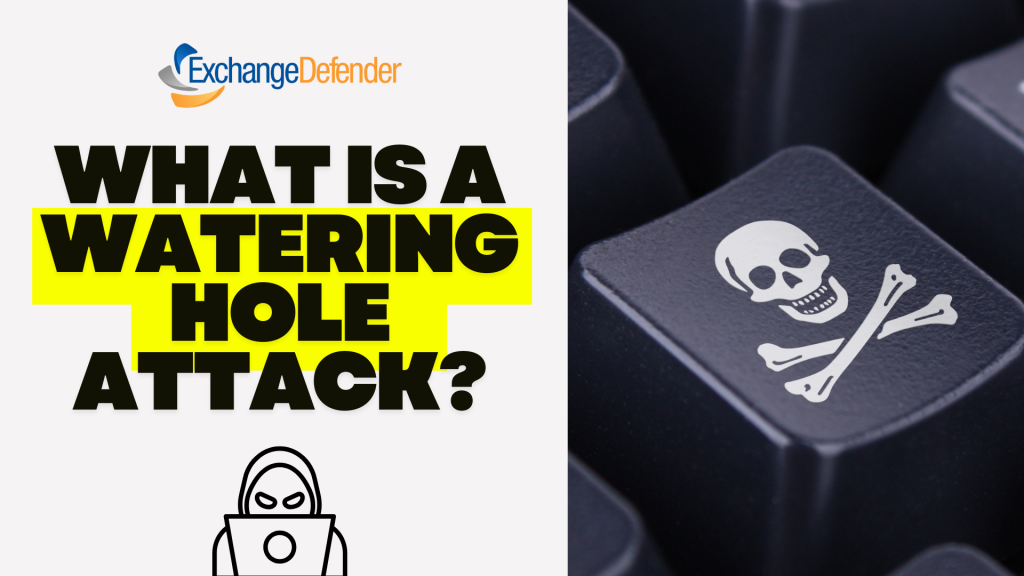Take the New ExchangeDefender Web Services for a Test Drive

As we announced in December of 2024, a major web services infrastructure upgrade is coming to all ExchangeDefender websites. Thank you to our many partners and clients who have been beta-testing the new web services and providing feedback and advice.
In order to check out ExchangeDefender on the new web service infrastructure as an admin you can just click on the Beta button under your logo at https://admin.exchangedefender.com:
Today we would like to invite you to check out the user experience on admin. In order to do so, follow this link:
(https://admin.exchangedefender.com/beta/enroll)
If something breaks and you need to leave, follow this link:
(https://admin.exchangedefender.com/beta/leave)
Remember to clear your cookies with Ctrl+Shift+R/Cmd+Shift+R so that the web services route your requests to the proper place. You’ll know you have a cookie issue if you start seeing a lot of ajax errors.
What’s next?
On Wednesday, February 5th, we expect our entire workload to be on the new infrastructure and the old stuff will be retired. As a security company we always have to run the latest but we also have to improvise in order to protect you from unique attacks and hacks. Over time, that slows things down and makes them disorganized – not to worry, we’ve already got it fixed. 🙂 New web services will make it possible for us to launch our new ExchangeDefender UI, better integrate AI, and help better protect your information.
Protect Yourself from Cyberattacks: Simple Tips for Everyday Users

In today’s digital world, cyberattacks are an ever-present threat. From phishing emails and malicious websites to ransomware and data breaches, online dangers lurk around every corner. But don’t worry, you can take simple steps to protect yourself and your devices.
1. Strong Passwords are Your First Line of Defense:
- Create unique and complex passwords: Avoid easy-to-guess passwords like “password123” or your birthday.
- Use a password manager: A password manager can generate and securely store strong, unique passwords for each of your online accounts.
- Enable two-factor authentication (2FA): This adds an extra layer of security by requiring a second form of verification, such as a code sent to your phone, in addition to your password.
2. Be Wary of Suspicious Emails and Links:
- Hover over links before clicking: Check the actual URL of the website before clicking on any link in an email.
- Be cautious of unsolicited emails: If you receive an unexpected email, especially one asking for personal information, be suspicious.
- Don’t open attachments from unknown senders: Attachments can contain malware that can infect your device.
3. Keep Your Software Updated:
- Install software updates promptly: Updates often include security patches that address vulnerabilities exploited by cybercriminals.
- Use reputable antivirus and anti-malware software: These tools can help protect your devices from malware and other threats.
4. Be Mindful of Public Wi-Fi:
- Avoid accessing sensitive information on public Wi-Fi networks.
- Use a VPN (Virtual Private Network) to encrypt your internet traffic.
5. Practice Safe Browsing Habits:
- Be cautious of websites that look suspicious or offer deals that seem too good to be true.
- Be mindful of what information you share online.
- Regularly review your online privacy settings.
Following these simple tips can significantly reduce your risk of falling victim to cyberattacks and protect your personal information. Remember, staying informed and practicing safe online habits are crucial in today’s digital world. For more information on cybersecurity best practices, visit the ExchangeDefender website.
ExchangeDefender Web Service Infrastructure Updates

Thank you for another fantastic year of keeping your email secure and reliable, killing SPAM and cyber threats has never been more fun. We’re finishing the year strong on a company-wide upgrade to our web services infrastructure.
We will be upgrading all of our web services and virtually every web site of ours you interact with for two reasons:
1) To prepare the infrastructure for amazing new features in 2025
2) To reflect on workloads being moved from browsers/desktops to mobile/API.
Over the years ExchangeDefender has grown a ton and as a cybersecurity company we’re often addressing realtime attacks. Hackers are creative, so we have to be creative too in order to stop emerging exploits from causing damage to our clients data.
How can I help?
We currently have our new infrastructure running in parallel with the existing ExchangeDefender, so you can easily experience the new stuff at https://admin.exchangedefender.com. When logged in as the Service Provider or Domain Administrator you will see a button right under your logo labeled TRY THE NEW BETA SITE:
You can always exit the beta experience by clicking on the “Leave Beta” button underneath. Note: If you switch back to production from beta make sure you refresh the page with Ctrl+Shift+R / Cmd+Shift+R and then restart your browser completely.
We encourage our clients and partners to test the new service, verify that your API integrations and plugins work. One thing you will notice is that the beta service is several orders of magnitude faster than our production stuff.
We expect to move all our workloads to the new web site by Wednesday, February 5th.
Upgrade Notice: Login Service Enhancements and Monitoring Improvements

Over the weekend, we designed, tested, and implemented new architectural solutions to address recent issues with the central login service for ExchangeDefender products. Additionally, we identified and began resolving a critical alerting issue that had prevented our NOC from receiving timely notifications about service outages.
To expedite improvements, we deployed a web cluster originally planned for a later release. This new cluster introduces advanced high-availability features, including self-healing capabilities and integration with modern, distributed monitoring solutions to ensure consistent global accessibility.
Given the scope of this upgrade, we opted for a phased rollout using A/B testing to ensure service reliability. Over the past three days, we’ve gradually increased traffic to the new cluster, starting at 12%, while monitoring server and load balancer performance metrics. Currently, 20% of traffic is routed through the new cluster, with the remaining 80% handled by the legacy system. In the event of a failure in either cluster, the load balancer will dynamically shift all traffic to the active system, even if a customer was initially pinned to the affected cluster.
Performance Improvements
The initial results have been highly encouraging, with noticeable performance gains. We’ve observed a 5x improvement in P95 latency and a 3x improvement in P99 latency compared to the previous setup.
Next Steps
Next weekend, we plan to implement the final phase of this upgrade, introducing automated transitions between data centers to address any performance or reliability issues proactively.
Addressing Notification System Failures
During our investigation, we identified a failure point in our notification system. Alerts were being throttled or discarded by our SMS gateway, particularly during cascading outages triggered by login server downtime. We’ve since refreshed our monitoring solution with modern analytics tools and implemented multiple alerting pipelines to prevent future disruptions. While we continue to work with our SMS gateway provider to resolve filtering issues, these changes significantly improve our ability to detect and respond to service issues.
Thank You for Your Patience
We sincerely appreciate your understanding as we worked to diagnose and resolve these challenges. We recognize how frustrating the repeated service interruptions have been and want to assure you that we’ve been actively addressing these issues with a focus on long-term reliability and minimal disruption.
Thank you for your continued trust in ExchangeDefender.
Most Googled Cybersecurity Definitions in 2024

Cybersecurity is more important than ever. To protect ourselves online, it’s important to understand key cybersecurity terms. This guide will break down these concepts in simple terms, making them easy to grasp.
Encryption
The process of converting information or data into a code, preventing unauthorized access. It’s like locking a message in a safe, only accessible with the right key.
Firewall
A security system that monitors network traffic and blocks unauthorized access. It’s like a security guard, protecting your digital fortress.
Spyware
Malicious software that secretly tracks your online activity, stealing personal information and compromising your privacy.
Malware
Harmful software designed to damage or disrupt computer systems. It’s like a digital virus that can infect your device.
Smishing
A type of phishing attack that uses text messages to trick people into revealing sensitive information. It’s a sneaky tactic to steal your personal data.
SpearPhishing
A targeted phishing attack that uses personalized messages to deceive specific individuals or organizations. It’s a more sophisticated form of phishing that often mimics legitimate emails.
By understanding these core cybersecurity terms, you can take control of your online security. Remember, a little knowledge can go a long way in protecting yourself from cyber threats. Stay informed, stay safe, and enjoy the digital world with confidence.
What is Ransomware? The Price of Clickbait


What is Ransomware?
Ransomware is a type of Malware. It is a nasty computer virus that locks up your important files. Think of your files as your favorite photos, important documents, or work projects. When ransomware strikes, it scrambles these files, making them useless until you pay the hackers. It’s like a digital thief who kidnaps your data and demands a ransom to give it back.

The Allure of Malicious Links and Attachments
Let’s be real, we’re constantly bombarded with information. From social media to email, we’re exposed to a constant stream of links and attachments. While many of these are harmless, some can be incredibly dangerous.

Why do people click on malicious links and attachments?
- Curiosity: A well-crafted subject line or intriguing message can pique our interest, leading us to click without thinking.
- Sense of urgency: Cybercriminals often use tactics like “urgent action required” or “limited-time offer” to create a sense of urgency, prompting us to click impulsively.
- Trust in the sender: If the email appears to be from a trusted source, such as a friend, family member, or colleague, we may be more likely to let our guard down.

The Devastating Consequences
The consequences of clicking on a malicious link or attachment can be severe. Ransomware attacks can cripple businesses, government agencies, and individuals, leading to significant financial losses, data breaches, and reputational damage.
How to Protect Yourself
To protect yourself from ransomware attacks, it’s essential to practice good cyber hygiene. Here are some tips:
- Be cautious of unsolicited emails: Avoid opening emails from unknown senders or those with suspicious subject lines.
- Verify the sender: Double-check the sender’s email address and look for any typos or grammatical errors.
- Hover over links before clicking: This can help you identify malicious links that may redirect you to harmful websites.
- Use strong, unique passwords: A strong password can make it more difficult for cybercriminals to access your accounts.
- Keep your software up-to-date: Regularly update your operating system and software applications to patch vulnerabilities.
- Back up your data: Regularly back up your important files to an external hard drive or cloud storage service.
By following these simple tips, you can significantly reduce your risk of falling victim to a ransomware attack.
Remember, a single click can have devastating consequences.
Whaling: A Sophisticated Cyber Threat Targeting High-Profile Individuals

Whaling, a type of phishing attack, targets high-profile individuals within an organization, such as CEOs, CFOs, and other executives. These individuals are often referred to as “whales” due to their high-value status and the potential for significant financial gain or data breaches if compromised.
How does whaling differ from traditional phishing attacks?
While traditional phishing attacks cast a wide net, sending out generic emails to a large number of recipients, whaling attacks are highly targeted and meticulously crafted. Cybercriminals conduct extensive research on their victims, gathering information about their personal and professional lives to create highly convincing and personalized messages.
Key Characteristics of Whaling Attacks:
- Highly Personalized: Whaling emails are tailored to the specific recipient, often referencing their role, recent projects, or personal information.
- Urgent Tone: Whaling attacks often create a sense of urgency, urging the victim to take immediate action, such as transferring funds or sharing sensitive information.
- Spoofed Identities: Cybercriminals may spoof the email addresses of trusted individuals or organizations to increase credibility.
- Sophisticated Social Engineering Techniques: Whaling attacks employ sophisticated social engineering tactics to manipulate victims into compromising their security.
Example of a Whaling Attack
A cybercriminal might impersonate a company’s CEO and send an urgent email to the CFO, requesting an immediate wire transfer. The email could be crafted to appear legitimate, using the CEO’s email address and signature. If the CFO falls for the deception, they could unknowingly transfer a large sum of money to the attacker’s account.
Protecting Yourself and Your Organization
To protect against whaling attacks, organizations should implement robust security measures, including employee awareness training, strong password policies, multi-factor authentication, and email filtering solutions. Additionally, executives should be particularly cautious when receiving unexpected requests, especially those that involve financial transactions or sensitive information.
Protect your Microsoft 365 environment with ExchangeDefender security solutions. Try ExchangeDefender PRO for free today!
Phishing 101: The Most Common Scams

Have you ever been hooked by a phishing email? It’s like those annoying telemarketers calling your landline, but way more dangerous. Instead of trying to sell you a vacation package, scammers are trying to steal your identity, your money, or both.
Let’s reel in some of the most common phishing scams
- Spear Phishing: Scammers use personal information to make their emails seem legit. They might know your name, job, or even your favorite vacation spot.
- Whaling: This is the big game of phishing. Think of it as hunting down CEOs and other high-profile targets. Scammers use sophisticated techniques to trick these folks into giving up sensitive information
- Smishing: This is like getting a text message from a friend asking for a favor. But instead of needing a ride, they want your bank account details.
- Vishing: This is the phone call version of phishing. Scammers will call you pretending to be from a bank or government agency, trying to trick you into giving up your personal information.
- Clone Phishing: This is like a scammer impersonating your friend or coworker. They’ll send you an email that looks almost identical to one you’ve received before, hoping you’ll fall for the trick.

But don’t worry, you’re not a helpless target. Here are some tips to avoid falling victim to phishing scams:
- Be cautious of unfamiliar emails. If you receive an email from someone you don’t know or a suspicious subject line, be extra careful.
- Verify the sender’s address. Look for typos or suspicious email addresses.
- Avoid clicking on suspicious links. If you’re unsure about a link, hover over it to see the actual URL
. - Never share personal information. Scammers will try to trick you into divulging your passwords, credit card numbers, or other sensitive data.
- Keep your software updated. Ensure your operating system and antivirus software are always up-to-date.
Remember, staying safe online requires vigilance, knowledge, and a bit of caution. So the next time you receive a suspicious email, don’t let scammers trick you!
Tired of dealing with phishing scams? ExchangeDefender’s advanced phishing protection can help keep your inbox clean and your data safe. Ask us for a free trial!
Spoofing vs. Phishing: Understanding the Differences

In today’s digital world, online security is more important than ever. Two common threats that can compromise your personal information and security are spoofing and phishing. While these terms may sound similar, they represent distinct types of cyberattacks. In this blog post, we’ll explore the differences between spoofing and phishing, how they work, and how you can protect yourself from falling victim to these scams.

Spoofing: It’s Not Who You Say You Are
Spoofing is like someone pretending to be someone else online. For example, a scammer might send you an email that looks like it’s from your bank, but it’s actually from them. They’re trying to trick you into thinking they’re someone you trust.

Phishing: A Fishing Expedition for Your Information
Phishing is a bit like a fishing expedition, but instead of catching fish, scammers are trying to catch your personal information. They might send you an email or text message that looks like it’s from a legitimate company, asking you to click on a link or download an attachment. If you do, you might end up giving away your personal information, like your passwords or credit card numbers.

The Key Differences
- While both spoofing and phishing involve deception, there are some key differences between them:
- Intent: Spoofing is often used to gain unauthorized access or launch other attacks, while phishing is primarily used to steal personal information.
- Techniques: Spoofing involves technical methods to disguise the sender’s identity, while phishing often relies on social engineering techniques to manipulate victims.
- Impact: Spoofing can have a variety of consequences, while phishing attacks are primarily used to steal personal information.

How to Protect Yourself
- Be skeptical. If you get an unexpected email, text, or phone call, be suspicious. Don’t click on links or open attachments unless you’re sure they’re from who they say they’re from.
- Check for typos and grammar mistakes. Scammers often make mistakes in their emails or texts.
- Never give out personal information. Don’t share your passwords, credit card numbers, or other sensitive information with anyone unless you’re absolutely sure they’re who they say they are.
By being aware of the difference between spoofing and phishing, and by following these tips, you can help protect yourself from becoming a victim of these scams.
Looking for Spoofing AND Phishing protection that’s affordable? Go for ExchangeDefender PRO!
Why ExchangeDefender Live Archive Is a Premium Email Cloud Storage Solution

In today’s fast-paced business world, email is the backbone of communication. From client discussions to crucial contract negotiations, your inbox holds vital information that you can’t afford to lose. Yet, data loss happens—whether through accidental deletion, outages, or cyber-attacks. Enter ExchangeDefender Live Archive Email Backup, the premium cloud storage solution designed to safeguard your emails and keep your operations running smoothly no matter what.
Why Email Backup Is a Must
Think of how often you rely on your email to retrieve old information, resend an important document, or resolve a customer service issue. Now imagine losing access to all of that—an inbox wiped clean, sensitive data gone, or downtime halting your business for hours or even days.
With email being such a critical business asset, relying on your primary email provider’s backup solution is a gamble. You need a reliable, secure, and accessible system to protect your email data, and that’s where ExchangeDefender Live Archive Email Backup comes into play.

What Makes ExchangeDefender Live Archive Stand Out?
ExchangeDefender’s Live Archive is more than just a cloud backup—it’s a complete email security and accessibility tool that offers peace of mind for businesses of all sizes. Here’s why it’s a must-have solution:
1. Continuous, Automatic Backup
With Live Archive, your emails are automatically backed up in real-time, so you’ll never have to worry about manually saving critical messages or attachments. Every email is safely stored, no matter when it was received or sent. This ensures that your email data is always up to date, providing a seamless experience for recovery.
2. 24/7 Access to Your Emails
In the event of downtime, whether from server outages or natural disasters, ExchangeDefender Live Archive ensures you have uninterrupted access to your emails. You can send, receive, and access archived emails directly through the cloud, making sure your business stays up and running, even if your email server goes down.
3. Unlimited Cloud Storage
Say goodbye to space limitations and cumbersome storage quotas. Live Archive offers unlimited storage in the cloud, meaning you can keep every single email you’ve ever sent or received, all securely stored and easily retrievable. No more purging your inbox or worrying about exceeding storage limits.
4. Enhanced Security
Data protection is at the core of ExchangeDefender’s services. With Live Archive, your emails are stored in military-grade encrypted cloud storage, safeguarding them against unauthorized access, malware, and cyber-attacks. You’ll also have access to advanced threat protection and compliance features to ensure your data is safe and secure.
5. Easy Search and Retrieval
Finding an old email can feel like searching for a needle in a haystack, but with Live Archive’s advanced search capabilities, you can quickly locate any email or attachment in your archive. Filter by date, subject, sender, or keyword, and retrieve what you need in seconds.
Who Can Benefit from ExchangeDefender Live Archive?
- Small to Medium-Sized Businesses (SMBs): Ensuring uninterrupted communication is crucial for maintaining operations and customer satisfaction. Live Archive helps SMBs protect vital information without the complexity of larger enterprise-level solutions.
- Large Enterprises: For organizations handling thousands of emails daily, Live Archive’s unlimited storage and robust security features offer a scalable solution that ensures business continuity.
- Legal, Financial, and Healthcare Professionals: Industries that require compliance with data retention policies will find Live Archive indispensable for archiving and retrieving sensitive information securely.
Ready to safeguard your business emails for good? Learn more about ExchangeDefender Live Archive and start protecting your communication today.
For more details, visit: ExchangeDefender Live Archive Email Backup.





